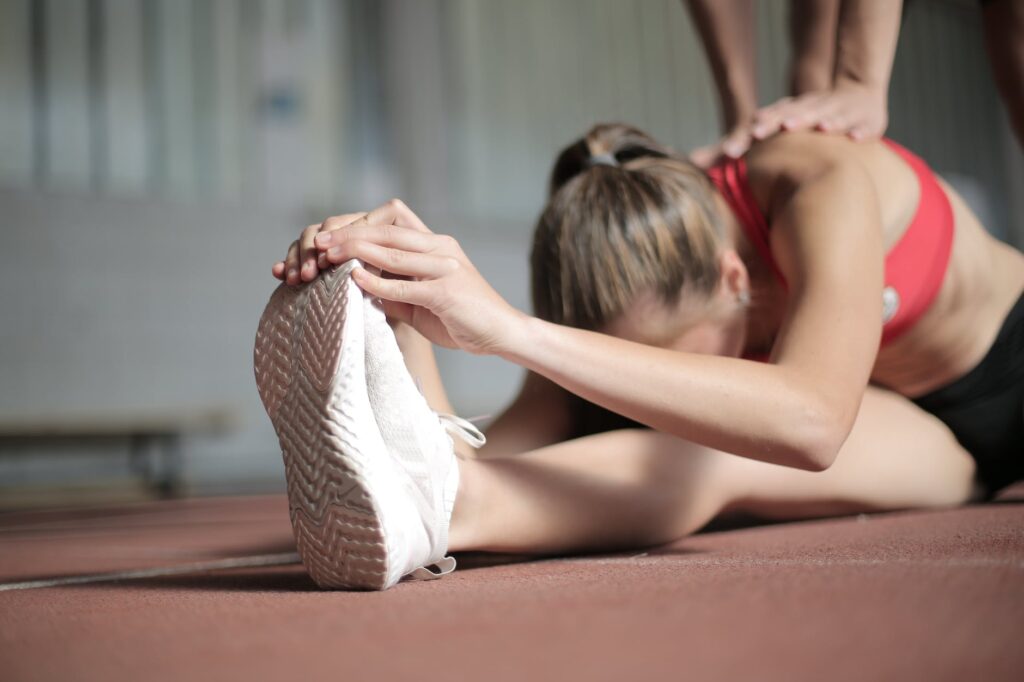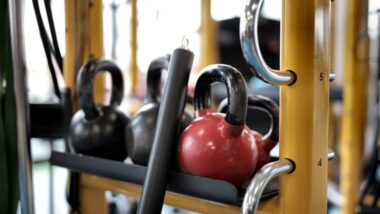Best Shoes For Gym and Running
The correct shoes for gym and running are essential for an effective and safe workout. Choosing the right pair of shoes can be difficult due to the many features, designs and styles available. This article will provide an overview of the best shoes for gym and running, discussing their key features and benefits.
The first step in selecting the right shoes is understanding the various types of shoes available. Running shoes are designed specifically for running activities such as jogging or sprinting. They provide extra cushioning to absorb shock when landing on hard surfaces. Gym shoes are multi-purpose; they are lightweight but also have excellent shock absorption, making them suitable for weightlifting and other fitness activities.
In addition to different types of shoes, there are a variety of features that should be taken into consideration when choosing the best pair for gym and running activities. These include cushioning, stability, arch support, breathability, durability and traction. Understanding these features is important in helping to select a shoe that offers the most benefit in terms of performance, comfort and safety.
How To Choose The Best Shoes For Gym And Running
When it comes to choosing the right shoes for gym and running, there are a few essential factors to consider. For example, one must take into account their individual foot type, desired activity level, and budget when selecting the best shoe for their needs. Additionally, the specific features of the different types of shoes – such as running shoes, gym shoes, and training shoes – should be carefully evaluated.
For those who are looking for some of the best options when it comes to workout shoes, the Nike Metcon is an excellent choice for both men and women. This type of shoe offers superior comfort and stability due to its snug fit and lightweight construction. The Nike Metcon also has excellent grip on all surfaces, making it great for Cross Training activities. Additionally, Converse Chuck Taylor All-Stars are great for casual or light workouts due to their comfortable cushioning system that helps reduce shock during jumps or other movements.
Finally, Nike Free running shoes are perfect for those who need a more flexible option when it comes to running or weightlifting. The design of this shoe enables greater range of motion while providing ample cushioning with its rubber sole. Furthermore, these shoes come in a variety of colors and styles that make them ideal for any occasion or activity level.

10 Best Shoes For Gym And Running
When it comes to finding the best shoes for gym and running, there are a variety of options available. For men, some of the best gym shoes include the Nike Metcon and Converse Chuck Taylor All-Stars. Both of these shoes offer superior comfort and stability, making them ideal for any type of workout or training session. Additionally, the Nike Metcon provides excellent grip on all surfaces, perfect for Cross Training activities.
For those who prefer running shoes, one of the best options is the Nike Free model. This shoe offers greater range of motion while providing ample cushioning with its rubber sole. In addition to being comfortable, this type of shoe also comes in a variety of colors and styles that make it perfect for any occasion or activity level.
Finally, those engaging in weight lifting or CrossFit may want to consider investing in a more supportive training shoe like Reeboks Nano series. These shoes provide extra support and cushioning that helps protect feet during heavy lifts or other intense gym workouts. With so many different types of shoes available, finding one suitable for every type of workout is easy.
With such a wide selection of shoes available specifically designed for gym and running activities, it is easy to find the right pair that meets both personal style preferences as well as performance needs.
Benefits Of Wearing The Best Shoes For Gym And Running
Wearing the right shoes for gym and running can provide a range of benefits. The most obvious is that it helps protect feet from injury due to hard surfaces like a gym floor, or when lifting weights. A good pair of gym sneakers will also provide stability when lifting and won’t slip on wet surfaces. This is especially important for those engaging in CrossFit, as they may require shoes better suited to multi directional training than regular running shoes.
New gym shoes can also help improve performance during workouts. Shoes specifically designed for running or lifting offer more cushioning than regular sneakers, which can make exercises more comfortable and enjoyable. Best Running shoes with extra cushioning can help runners go longer distances with less fatigue, while lifting shoes are designed to give extra support and stability when performing squats or deadlifts.
Finally, wearing the best shoes for gym and running will ensure that feet stay comfortable during any activity level. With the right pair of kicks, athletes can be sure their feet are getting the protection they need while still being able to perform at their highest level.

Best Shoes For Gym And Running On A Budget
Having the right shoes for gym and running is essential, but it doesn’t have to break the bank. Whether you’re a beginner or a seasoned athlete, there are affordable options that provide quality protection and performance. Here are some of the best gym shoes for every budget:
• Training Shoes: If you’re looking for a versatile shoe that’s suitable for both running and gym activities, then training shoes are a great choice. They typically feature extra cushioning in the heel, plus a reinforced toe box to keep your feet safe. Such shoes can be used for interval training or any other type of light exercise.
• Cross Trainer: Cross trainers provide more support than regular sneakers, making them ideal for high-impact activities such as running, jumping, and lifting weights. The extra support comes from enhanced arch and heel cushioning, making them better gym shoes.
• Running Shoes: If you’re primarily looking to wear running shoes, there is no need to spend a fortune on specialized models. Affordable options can still provide adequate cushioning and support while keeping your feet comfortable during shorter runs.
No matter what your budget is, there are plenty of options when it comes to finding the best shoes for gym and running. With so many styles available, it’s easy to find a pair with features that will meet your needs while being affordable at the same time.
Shoes For Different Types Of Running And Gym Workouts
When it comes to finding the best shoes for running or gym workouts, it is important to take into account the type of exercise and what kind of workout you are doing. Different types of shoes are designed with features that can provide optimal protection and performance for different types of exercises. For example, running shoes feature cushioning in the heel and arch area for absorbing shock during long runs, while tennis shoes provide more lateral stability to protect feet from quick side-to-side movement needed during court sports.
Cross trainers are an increasingly popular choice among athletes who need a versatile shoe that can handle a range of activities in the gym. Such shoes typically include extra cushioning in the heel and arch area, as well as reinforced toe boxes for added protection when lifting weights or doing other high-impact exercises.
No matter what type of workout you’re doing, having the right pair of shoes will help ensure better performance and safety. When shopping around for the best shoes for your specific needs, make sure they fit correctly and comfortably before putting them in your gym bag. With so many styles available today, it’s easy to find a pair that will meet your requirements while providing superior protection and performance at an affordable price.

Frequently Asked Questions
How Often Should I Replace My Gym And Running Shoes?
The question of how often to replace gym and running shoes has long been a topic of discussion for athletes and other physically active individuals. With regular use, the shoes may deteriorate quickly and need to be replaced in order to maximize performance and safety. In this article, we will examine the factors that can determine when to replace running and gym shoes, as well as provide an overview of tips for choosing the right pair.
When it comes down to it, there is no single definitive answer as to when one should replace their gym and running shoes; however, some general guidelines can be provided.
Firstly, the frequency with which someone exercises is an important factor – if they are regularly exercising more than three times per week then their shoes should probably be replaced every four months or so.
Secondly, another factor is the type of activities being done: those who are doing high-impact activities such as running or jumping will likely require new shoes more often than those doing lower impact exercises such as walking or yoga.
Finally, it is important to pay attention to any signs that the shoes may be showing – such as wearing on the soles or decreased cushioning – which could indicate that they need replacing sooner rather than later.
When selecting a new pair of gym and running shoes there are several key points to consider:
• Quality – Invest in a good quality shoe from a reputable brand; this will ensure better performance and longer life span.
• Comfort – Make sure that the fit is snug but not too tight; you should also check to see if there is enough cushioning and support for your activity level.
• Durability – Look for features such as reinforced heels or extra layers of rubber on the sole that can help increase durability over time.
Ultimately, deciding when to replace running and gym shoes depends on multiple factors including activity level, type of activities being done, wear patterns of current pair, etc. It is important for athletes and other physically active individuals to assess their own needs in order to determine when they should purchase new footwear in order to maximize performance while minimizing risk of injury.
What Type Of Arch Support Should I Look For In Gym And Running Shoes?
Selecting the best shoes for gym and running activities can be a daunting task. Many factors must be considered when making this choice, one of which is arch support. Arch support refers to the design of the shoe that accommodates the shape of an individual’s foot arch, helping to reduce pain and injury due to excessive strain.
In order to determine which type of arch support is suitable for an individual’s needs, a simple test can be conducted. The individual should stand on a flat surface and wet their feet until they are visibly damp. Then, they should step onto a dry piece of paper and observe the imprint left by their feet.
If the imprint resembles an entire foot with a wide gap between the heel and forefoot, then this person likely has low arches or flat feet and would benefit from shoes with substantial arch support. On the other hand, if there is only a narrow gap between heel and forefoot in the imprint, then this person likely has high arches and would benefit from shoes with moderate arch support.
When selecting gym and running shoes based on arch support, it is important to keep in mind that different brands may use varying levels of cushioning in their designs; some offer maximum cushioning while others provide less cushioning but more stability. It is essential to find a balance between fit, comfort, and function that suits one’s particular needs in order to ensure successful performance during physical activity.

Is It Important To Break In Gym And Running Shoes Before Using Them?
Breaking in gym and running shoes is a commonly discussed topic when looking for the best shoe for fitness activities. It is often debated whether or not it is necessary to break in shoes before using them, or if going straight from store to workout is the best option. To address this question, it is important to understand how breaking in shoes works and why it may be beneficial.
Breaking in shoes consists of wearing them frequently to allow the material of the shoe to soften up and mold more comfortably to your foot shape. This process can take days or even weeks depending on how often you wear them, as well as the construction of the shoe itself.
As you wear them, they become more comfortable, making it easier to exercise without having your feet slip around inside. Additionally, with the material becoming softer over time, there is less risk of blisters or other irritations caused by stiffer materials rubbing against your skin.
As a result of breaking in gym and running shoes, athletes are able to experience improved performance when exercising due to having better grip and stability within their footwear. Breaking them in also helps protect against injuries since they will fit better and provide more support during strenuous activity.
Therefore, while it may not be completely necessary in all cases, it is generally recommended that gym and running shoes should be broken in before using them for any type of workout or running activity. This allows athletes to get the most out of their fitness routine while avoiding any potential discomfort or injury risks that could occur with improperly fitting footwear.
Is There A Difference Between Men’s And Women’s Gym And Running Shoes?
When it comes to the world of sports and athletics, one of the most important things an individual can consider is the type of shoes they choose. This is especially true for gym and running shoes, where finding the right pair can mean the difference between a successful workout or a painful experience. It is therefore essential to understand whether there are any differences between men’s and women’s gym and running shoes.
The answer to this question largely depends on the activity being undertaken. In general, women’s gym and running shoes tend to be narrower than those designed for men, as women’s feet are typically slightly narrower with higher arches than those of men. Additionally, many shoe manufacturers design their women’s models with extra cushioning in order to provide added support during activities such as aerobics or jogging.
However, there are also similarities between men’s and women’s gym and running shoes. Both types of footwear should provide adequate arch support, have sufficient cushioning material in order to protect against impact forces during exercise, and should be lightweight enough to ensure a comfortable workout experience. Ultimately, when selecting either type of shoe it is important to ensure they fit properly and provide enough stability while exercising in order to reduce the chance of injury or discomfort.
It is clear that there are some differences between men’s and women’s gym and running shoes which should be taken into consideration when shopping for new equipment. However, similarities remain in terms of general features such as support, cushioning, and weight which are key considerations when looking for a suitable pair for any activity.
Are There Any Special Considerations I Should Make When Purchasing Shoes For Different Types Of Running And Gym Workouts?
When it comes to purchasing shoes for gym and running, there are a variety of factors that should be taken into account. According to the American Orthopaedic Foot & Ankle Society, roughly 75% of Americans will experience foot pain at some point in their lives. This highlights the importance of taking special considerations when choosing the right pair of shoes for different types of workouts.
When selecting a pair of shoes for running, cushioning, stability and lightness are key factors. Cushioning helps absorb shock and impact, while stability is important for runners who have an increased risk of injury due to overpronation or supination. Lightweight shoes can help reduce fatigue during long runs as they require less energy from the runner.
Meanwhile, gym workouts such as resistance training may require a sturdier shoe with more cushioning or support features such as ankle straps to provide additional stability during exercises like squats or deadlifts.
Finally, men’s and women’s shoes can differ significantly in terms of size and fit. Women’s feet tend to be wider in the toe area compared to men’s and require more arch support.
Additionally, women often need a half-size up from their standard shoe size as their feet tend to swell throughout the day due to heat or other factors. It is also important to try on several pairs before making a purchase decision so that you can ensure proper fit and comfort when exercising.

Conclusion
In conclusion, when it comes to purchasing shoes for gym and running workouts, there are several important factors to consider. It is important to be aware of how often the shoes should be replaced and what type of arch support should be sought after. Also, breaking in gym and running shoes before using them can help ensure a more comfortable experience.
Furthermore, men’s and women’s gym and running shoes may have differences in terms of design or size. Taking all of these factors into account is essential in order to make sure that the individual has the best possible shoe suited for their needs – like a dream come true!
Therefore, shoppers must research, try on different pairs of shoes, and take into consideration any special considerations that may need to be made when selecting the perfect pair of gym or running shoes.


